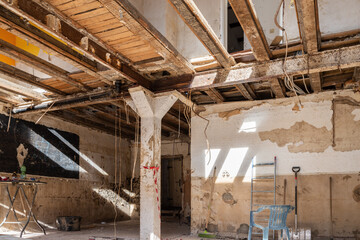Whether you have suffered a flood or another damage, there are steps you can take to ensure you get back on your feet as soon as possible. This article explains how to assess the damage and remove water. Then, it shows you how to clean and sanitize your home, as well as how to restore damaged items.

Getting rid of the water after a flood is essential to the post-flood recovery process. If you fail to remove the water after flooding, you may suffer from mold infestations and mildew problems. And, if you’re planning to sell your home, you may lose the value of your property.
Several different methodologies are used to assess the damage during flood restoration. Various approaches are based on water depth, water velocity, land use categories, and other factors. These measures can be used to estimate direct consequences in monetary terms. These estimates are important for policy development and adaptation planning.
Several studies have examined the damage estimation capabilities of various models. The most popular approach is to use depth-damage curves to estimate the damage to individual objects. Other models estimate the damage to exposed areas and buildings.
Another method is to survey individuals to estimate the damage to specific categories of objects. Typical categories include houses and buildings, agricultural crops, and people. However, a survey can be limited in its usefulness because it is not always possible to obtain a complete list of damaged objects in a given flood event.
After a flood, you may need to use a water pump or shop vac to get rid of the water. But you may also have to deal with a lot of debris. You should also wear protective clothing and equipment. You should also be aware that flood water can be contaminated, and you should not eat or drink anything that was exposed to flood water. The water may contain contaminants such as heavy metals or organic chemicals.
Getting your home back to its original condition after a flood is important. But it takes a lot of work. It can take a long time and many different steps to clean up. The first step is to remove all the debris from the house.
Once you have removed all the debris, cleaning up the floors is next. You can use paper towels and disinfectant cleaner.
The floors can get very dirty after a flood. Use rubber-soled gloves and rubber-soled shoes to protect your hands and feet. The floors should also be dried using paper towels. You can use a dehumidifier to help the drying process. After the floors have dried, you can start to clean up the walls and ceilings. If you can, you should use a fungicidal solution to kill the mold and mildew that could develop.
During the process of restoring your home after a flood, you may need to sanitize surfaces. This will help prevent the spread of diseases and illnesses. Many different products are available to clean surfaces, but choosing the right one is crucial.
A good product will contain chemicals that kill bacteria and germs. Before using the product, you should wipe down all surfaces to remove any traces of dirt. Invest in a dehumidifier to speed up the drying process. The CDC recommends using a solution of two tablespoons of liquid household bleach per gallon of water for sanitizing surfaces. Make sure the bleach is unscented and sodium hypochlorite. You can also use a solution of one cup of bleach to five gallons of water.
During the restoration process for a flood, you will have to take extra care of items that have been damaged. It is important to remove items that have been contaminated with water and mold. This can help you restore the items to their original condition. When removing furniture, you must wear goggles, gloves, and a face mask. You will also need to wash the furniture with soap and water. You may also want to use petroleum jelly to remove floodwater stains from the furniture.
You can call a restoration company if you need more time to clean and dry your furniture. These companies can help with the restoration process by providing structural drying, document recovery, water removal, dehumidification, sanitizing, flash-drying and other services.